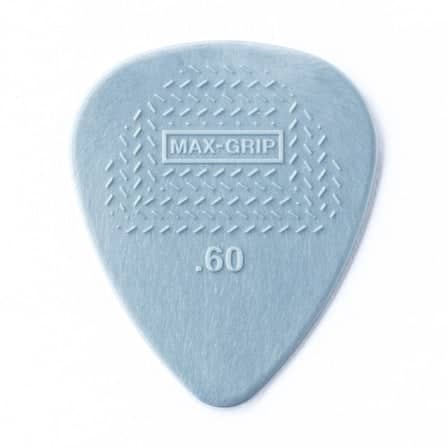
When looking to increase strumming speed on your acoustic guitar.
Staying in time can sometimes be a challenge for players while trying to keep the rhythm smooth, consistent and fluid (especially for beginners.)
In this post, I’m going to share some awesome tips, drills, and routines the pro guitar tutors teach their students for getting to grips with faster strumming on acoustic.
Implement the tips, practice the routines consistently and I guarantee you will notice an improvement on the speed, timing and rhythmic quality on your acoustic. Tip number one goes like this…
1. Choose a Light Plectrum
Plectrum choice is a very important and sometimes an overlooked aspect (mostly by beginners) when

The fact is, a lighter plectrum is your best friend when it comes to strumming rhythm heavy songs, giving you the best chance of keeping up with faster tempos and performing more intricate strumming patterns.
I would suggest plectrum thickness anywhere from 0.45mm to 0.70mm which is regarded as a light pick. Take a moment to double check what plectrum you are currently using right now!
Why a Light Plectrum?
The simple answer is that light plectrums flex easier and rake across the strings more freely allowing you to strum each string more fluidly.
A thicker pick is more rigid and will not flex as much as it makes contact with each individual string when strumming. This results in more drag thus slowing your strumming down in the process.
It is also common to catch a string when performing upstrokes knocking your steady tempo and
Why Heavy Picks Slow You Down?
Have you ever noticed when attempting to strum a fast tempo with a heavy pick, the damn thing just wants to come loose from your fingers?
Again, this is because a thick plectrum is too rigid causing it to move around which will loosen itself from your grip.
Although don’t get me wrong a heavier pick is ok for strumming as it can be done. However, you will have to develop a lighter touch or by using the edge of the plectrum which is not ideal for a beginner.
A mid to heavier plectrum is best suited for plucking individual strings mainly for riffs, solos, and picking patterns.
The take home point
I would then suggest slowly working up the gauges when you feel you need to dig
2. Hold Your Pick Firmly
Having an established and solid grip is required for building and maintaining and increasing your strumming speed without losing your plectrum.
As already mentioned, over time as you build up your strumming speed, you will notice your plectrum will want to move around in-between your fingers.
I’m not saying you need to hold your plectrum with a ‘vice-like’ grip as it is not necessary and can actually be negative for your playing.
The reason is that tensing for so long is uncomfortable and can promote tension in the forearm.
How to Hold Your Pick?
You need to find a happy medium
This will obviously come with time and practice.
If you are struggling with holding the plectrum when you reach a certain tempo or perform a difficult strumming pattern, there’s two things I can recommend…
Solution for a Slippy Pick
Plectrum Choice – The first solution is to use a plectrum same as the image below with grooves which is slightly more grippy than the standard flat and smooth-faced plectrum.

I like using these plectrums for gigs because when there’s a combination of stage lights, heat, nerves and sweaty palms. These pics allow for some extra grab when I need it most.
Middle Finger – The second is adding your middle finger to the plectrum for extra grip and stabilization.
This is common with beginners and is totally fine, I remember doing this in my earlier years when learning the guitar. Over time when dexterity has been established, you will go back to holding the plectrum using just your index finger.
3. Relax and Release Tension
When attempting to strum faster, you will automatically go into ‘attack mode’ and instantly tense up when trying to push and skills on the guitar. However, this is the last thing we want for strumming.
Therefore the best thing to do is relax, breathe naturally and remove all tension form the wrist and arm.
A nice loose wrist is a good way to set yourself up for increasing and maintaining the speed, quality and timing of your strumming.
A wrist and arm with tension will encourage what… rigidity and stiffness. A
Because when trying to push yourself when learning anything, tension will do nothing but slow you down and interrupt your rhythm.
The best thing to do is to be patient and, take your time because learning anything new can be frustrating.
4. It’s All in the Wrist

A common mistake by beginners is strumming entirely with the elbow, when in fact.. ‘it’s all in the wrist.’
Granted, there will be some movement from the elbow but strumming completely with the elbow is far less efficient and slower than rolling and flicking the wrist in a smooth and controlled manner across the strings.
Playing rhythm at higher tempos becomes incredibly difficult when the strumming is initiated at the elbow as opposed to the wrist.
Secondly, strumming at the elbow can not be sustained for long periods (again causing tension) as it is tiring as already mentioned, is far less efficient than using the wrist effectively.
So for increasing your strumming tempo make sure your wrist is the one doing most the work not the elbow.
You can just study your strumming arm to ensure you are not hinging at the elbow too much, making sure that your wrist is the one initiating the up and downstrokes.
5. Short Length Strums
To be able to strum at a fast tempo the range of your upstrokes and downstrokes needs to be a short length.
This point also ties into the previous point that strumming just with the elbow, increases the length of upstrokes and down strokes, hindering you to strum at a faster tempo.
Hence why a short range distance of upstrokes and downstroke combined with a loose wrist and slight hinging at the elbow will give you a solid foundation and better technique for strumming faster on your acoustic.
The more you practice and perfect your rhythm hand, the more you will automaticity pick up the perfect strumming distance without even realizing it.
6. Practice Strumming Drills
The best way to increase your strumming
The best is starting with
An example of a basic strumming drill ideal for a beginner would be this video below. Try it and then practice more difficult patterns and various speeds.
It will also be useful to add basic rhythm theory to your knowledge understanding the difference between ‘quarter notes’, ‘eight notes’ and ‘sixteen notes’ etc. Then working your way to execute them at faster tempos.
7. Practice to a Metronome
A metronome can be your best friend when practicing timing and rhythm on the guitar.
First, start with a slow tempo say ’75 beats per minute’ with a simple ‘down and up’ strumming pattern. When you can comfortably keep in time with a certain tempo increase it by ‘5 BPM’ until it becomes challenging again.
You can use this free site here for an online metronome that also relays a backing track which makes it easier to practice along.
This is a good routine to practice because you can witness your own progress and in the process, hear your own rhythm and strumming getting faster and sounding more solid on your acoustic over time.
With time and practice you will increase your speed and when you nail a certain tempo you can add different strumming patterns and add subtle ‘accents’ to give your strumming more flavor and tonality.
This is a proven way to speed up your strumming by adding baby steps to playing and allows you to witness ‘progress.’
8. Add Accents
Placing ‘accents’ in your rhythm is a technique to keep you in time when strumming phrases. This video explains accents very well so you can understand how they can keep a solid rhythm going.
Accents are described as emphasizing a slightly different ‘attack‘ on chords or palm muting a certain stroke of the strings.
Accents add a slight diversion to the ear spicing up your rhythm playing and can be used to keep you in time for complex strumming patterns.
Not all strumming patterns requires accents and sometimes are just not required. On a boring basic up and down pattern they can be used to spice things up a little.
However, you will need to reach a certain level of ability to start adding accents to your rhythm playing which will come over time.
9. Position your Acoustic Correctly
Ensuring your acoustic is firmly against your body and not sliding down your lap, allows a foundation for strumming and overall playing.
Make sure your guitar is wedged into your body this will give you the best angle to attack the strings making playing faster easier and more efficient when strumming.
You can use a step to raise your right leg when sitting to wedge your guitar into your lap.
You cannot play at your cleanest when your body position is wrong and the angle of attack across the strings is hampering your strokes.
Having an acoustic with a large body can also play a factor but with time and technique will get used to your acoustics body shape and learn to play around its drawbacks if it has any.
10. Be Patient
When learning anything new, the simple truth is that learning and mastering any skill takes time. I’ll say it again… reaching a high level of skill what ever it maybe takes time and effort.
I’ll try to avoid cliches but ‘Rome was definitely not built in a day.’ This certainly applies to learning the guitar.
If any newbie could just pick up any acoustic and start strumming and playing like a professional Spanish flamenco player. Then this post and countless tutorial videos would not need to exist.
In reality life does not work like this….
Without sounding too #deep, our results in life are what ‘we have struggled for’ and are ‘willing to struggle for’. So remember, be patient, one step at a time and you will get there with time, repetition, consistency and determination.
11. Practice, Practice, Practice!
This is an obvious point to make but as with anything practice makes perfect. I can give you all the pointers to increase your strumming speed.
But when it comes down to it, the only way you will perfect your strumming is to be consistent and patient. Take all the pointers I have given and apply them to your playing. Good Luck!
